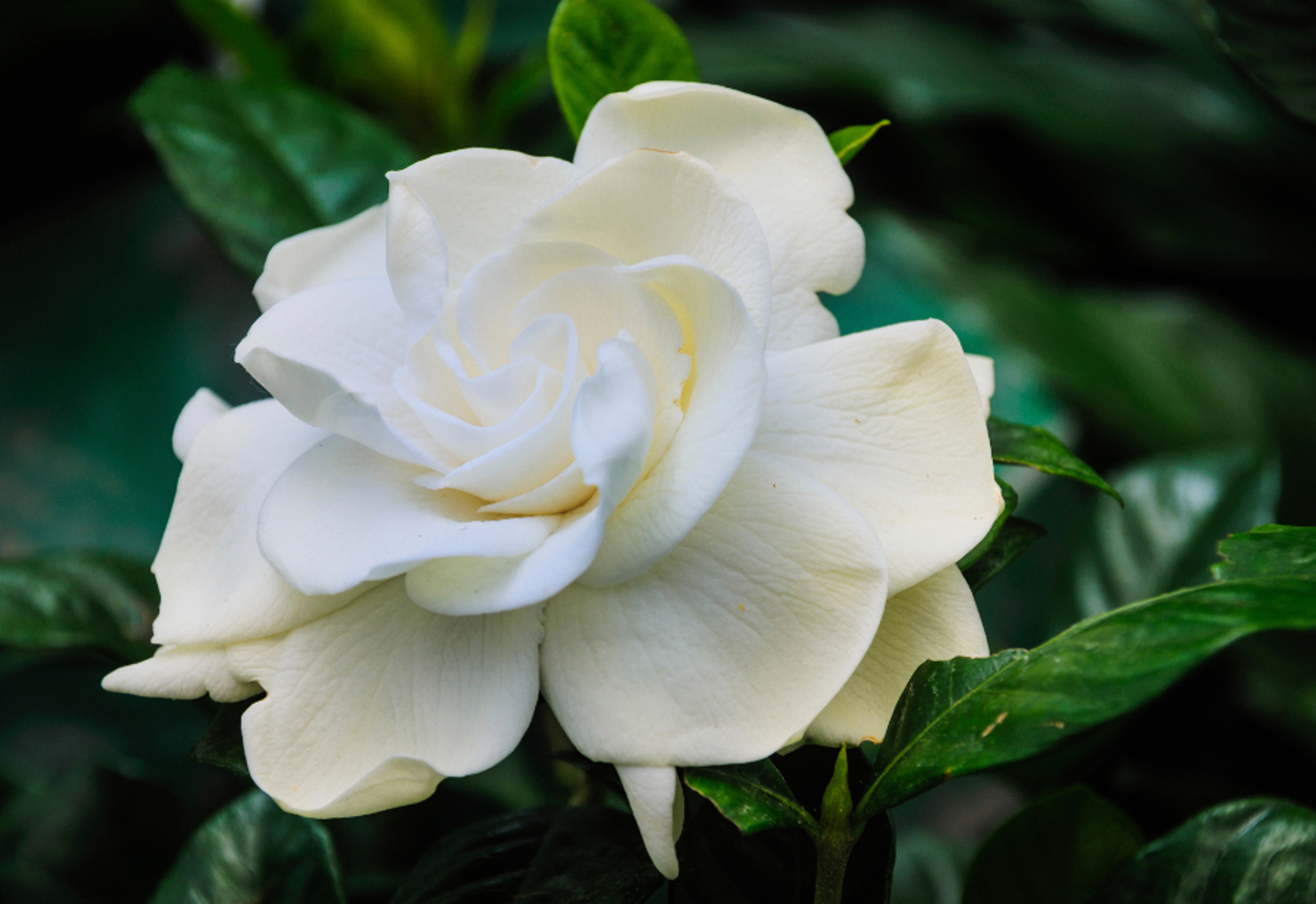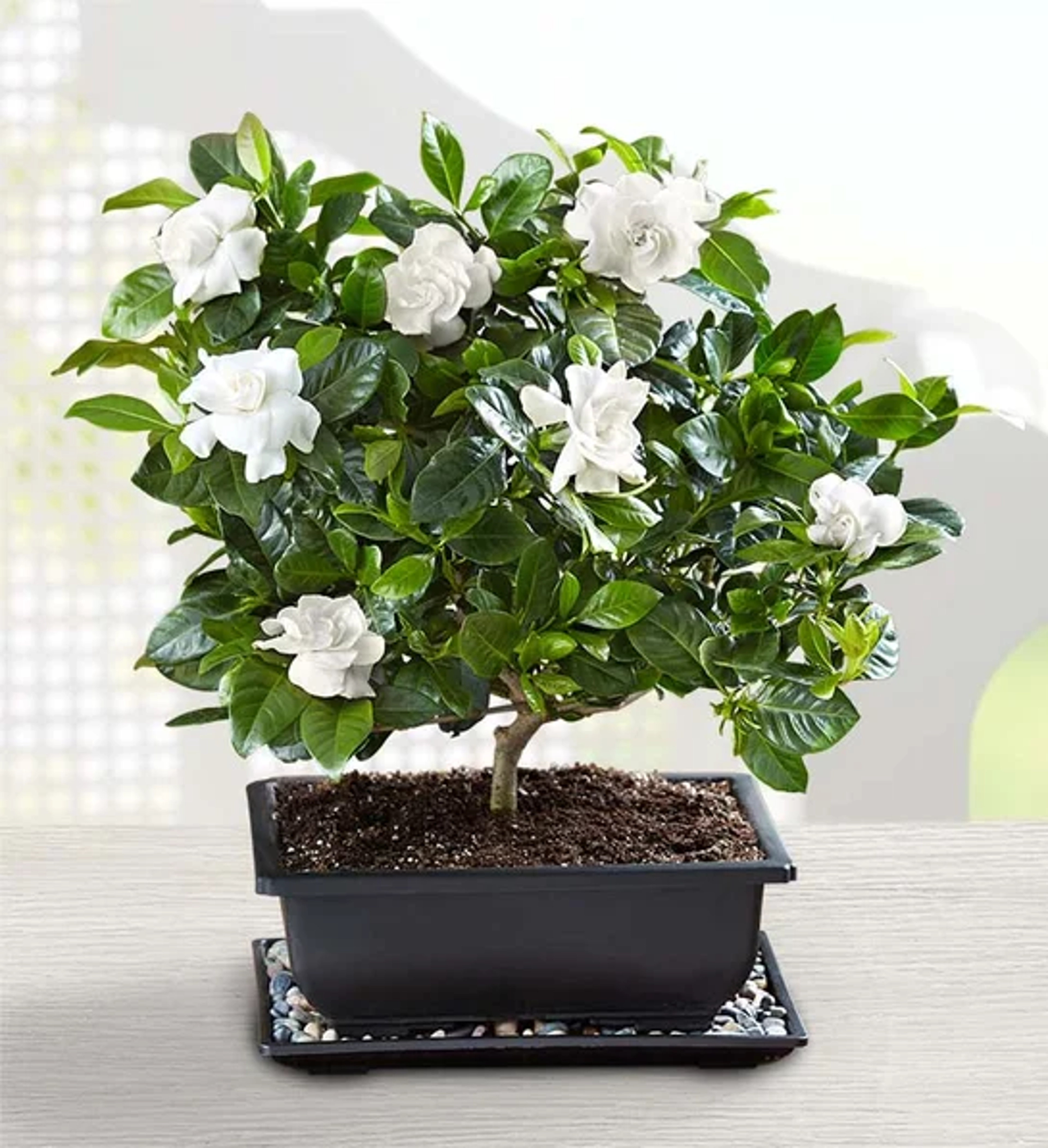All About Gardenias
Learn how to care for gardenias, both indoors and out, along with their meaning and symbolism.
May 24, 2016
Gardenias, which are most commonly known for their wonderfully scented and waxy white flowers that bring life to a garden starting in early spring, are the perfect solution for anyone interested in making their yard and home really pop. But unless you’ve had your fair share of experience with gardening, you should first take the time to learn gardenia facts before attempting to plant any.

Gardenia flower meaning
Gardenias are named after Alexander Garden of Charleston, South Carolina, and are known to symbolize love, refinement, and purity. It is no surprise, then, that gardenias are often included in wedding floral arrangements. During Victorian times, gardenias were used to send messages — especially those of a secret love — between two people, and today they are still the perfect gift to give someone special. Other meanings associated with this bloom include trust, renewal, clarity, and hope.
How to plant and grow gardenias
Depending on where you live, you can plant gardenias indoors or outdoors. Here are a few things to keep in mind when planting and growing gardenias.
Outdoor gardenias
- If you live in a rather hot climate, choose a location in your garden that receives full sun during the day but some afternoon shade.
- Plant your gardenias in spring or fall, and plan for each plant to be about 3 to 6 feet apart from each other.
- When digging into your soil, go only as deep as the root ball and no more than two to three times as wide as the root ball. Take the plant out of its container and place it in the hole, fill it halfway with soil, and then water. Once the water has drained, fill the remainder of the hole with soil and water again.

Indoor gardenias
- Choose a location for your gardenia prior to bringing it into your home and avoid moving it around once things are all set — gardenias are not fans of switching spots too often!
- Find a place in your home that receives plenty of light (without it being too direct) and is known for being humid. If your home isn't usually humid, you may need to use a humidifier to create the environment potted gardenias need.
- Keep your gardenias in a room where the temperature ranges from 55 to 75 degrees.
Gardenia care
Follow these instructions to ensure your gardenias thrive throughout their growing season.
- Always keep soil well drained and at a pH of 4.5 to 5.5 regardless of whether your gardenis are in a pot or your outdoor garden.
- Never let your gardenias completely dry out before watering them again and set up a schedule for regular watering.
- Add 2 to 4 inches of mulch around your gardenias to help retain moisture and control weeds.
- Prune gardenia plants in early spring to give them a nice shape for the season, then prune them again once the plant goes dormant at the end of the season.
- Fertilize gardenias frequently, but be careful not to over fertilize as this could stunt plant growth and cause damage.

Preventing gardenia pests
Like many plants and flowers, gardenias attract their fair share of pests. Some common ones include:
- Whiteflies
- Spider mites
- Aphids
- Thrips
- Scale insects
The best way to protect your gardenias from being taken over by pests is to follow the proper care instructions and keep them healthy. Making sure the environment is the right temperature and has the right moisture levels are two key factors in keeping pests away.









